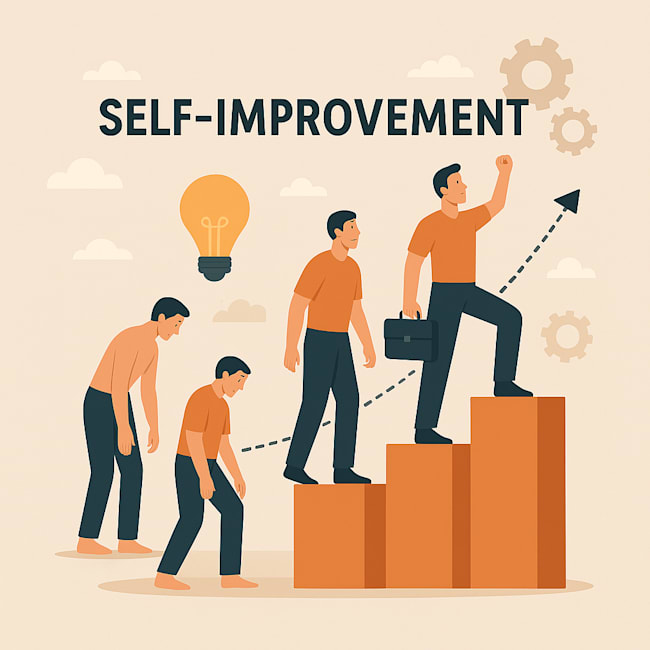Phsychological Foundation Model from Vedanta
Background
I have been listenting to a podcast series about the Bhagavad Gita. It is a lecture series by Swami Sarvapriyananda, the head of the New York Vedanta Society.
In one of the lectures from Chapter 2, the Swami speaks about a very interesting concept. The discussion is a spin-off from a shloka related to the Karma Yoga. In relation to the different spiritual practices, he explains a 3x3 matrix framework. The purpose of this framework is to progress in an individual’s spiritual journey. However, I also feel that this can actually be the foundation of a personal psychological foundation for a balanced life. Moreover, I feel that this framework can act as a reference for identifying solutions to different problems that one may encounter in one’s life.

Philosophical Framework
The framework is very direct and straigh-forward.
| Problem | Solution | Method |
|---|---|---|
| Ajnana (अज्ञान) Ignorance of our real nature |
Jnana (ज्ञान) Knowledge (i.e. direct insight into the Self / Atman) |
Jnana Yoga (ज्ञान योग) Specifically: • Shravana (श्रवण) “listening” or systematic study • Manana (मनन) “reasoning”/reflection • Nididhyasana (निदिध्यासन) “meditation” on those truths |
| Vikshepa (विक्षेप) Mental restlessness or scattering |
Ekāgrata (एकाग्रता) One-pointedness / concentration |
Dhyāna / Upāsana / Raja Yoga (ध्यान/ उपासना/ राज योग) • Meditative disciplines that calm and focus the mind • Regular seated meditation (dhyāna) • Devotional upāsanas that gather the mind |
| Mala (मल) Impurities in the mind (selfishness, negativity, etc.) |
Shuddhi (शुद्धि) Purity (a mind fit for spiritual insight) |
Karma Yoga (कर्म योग) • Selfless service, dedicated action, done without egoic grasping • Bhakti (devotional) practices also help purify the heart |
How to read this matrix
- Row 1 (Ajnana → Jnana → Jnana Yoga):
- The first big “problem” is ignorance (अज्ञान) (we do not realize we are the Atman or pure awareness).
- The “solution” is true knowledge (ज्ञान) (direct insight into that real nature).
- The method is Jnana Yoga (ज्ञान योग), which is comprised of 3 main practices:
- Shravana (श्रवण) (listening to or systematically studying Vedanta)
- Manana (मनन) (reflecting and reasoning about those teachings)
- Nididhyasana (निदिध्यासन) (meditating on them until they become direct, living insight).
- Row 2 (Vikshepa → Ekagrata → Dhyana):
- The second problem is the restless or scattered mind (विक्षेप - vikshepa).
- The solution is one-pointedness (एकाग्रता - ekāgrata) or genuine concentration.
- The method is primarily meditative practice—sometimes called Raja Yoga (राज योग), dhyāna (ध्यान) (meditation), or upāsana (उपासना) (focusing the mind on a chosen ideal), all aimed at training the mind to rest steadily.
- Row 3 (Mala → Shuddhi → Karma Yoga):
- The third problem is impurity of the mind (मल) (self-centered motives, negativity, ego-clinging, etc.).
- The solution is purification (shuddhi), i.e. a more selfless, loving, and sattvic mind and heart. It is also called as chitta shuddhi (चित्त शुद्धि).
- The method is Karma Yoga (कर्म योग), which means performing your daily work and duties in a spirit of service and non-attachment, dedicating actions to God or to the welfare of all, rather than to one’s narrow ego.
Putting it together
In an ideal spirutual path, one step follows te other. It is a very pragmatic approach since you can’t have concentration (एकाग्रता) if your mind is impure (मल). Similarly, you can’t focus on true knowledge (ज्ञान) if you don’t possess concentration (एकाग्रता).
However, the Swami says that the practices are like tools in a toolkit. You can work on all items simultaneously. Each practice is helpful by itself and serves as a stepping stone to the next higher level as well.
What does it mean for me?
Personally, I find this to be a very practical guide to lead a good life. This matrix is handy for solving real-world problems. For example, here are some ways I would use it.
| Issue | Solution |
|---|---|
| I don’t feel like doing something because I can’t identify “what’s in it for me?” in this task. However, I know it is good for the company. | I can take umbrage in the 3rd row and follow Karma Yoga. I can vow to do my best, and offer the work as an offering to God (or to the company’s goodwill). The main item is it should be selfless and not a quid-pro-quo exchange. |
| I have many thigs to complete. Deadlines are jostling each other. I am jumping from one thing to another and yet no task seems to be complete. I am confused and restless. | I can take help from row 2 and try to achive concentration or Ekāgrata (एकाग्रता). Basically, take a few minutes off, and sit quietly and meditate. This will calm the mind and I can take a step back, prioritize and then start tacking the work one task at a time. |
If you feel that this is not reasonable or sounds like high-spirituality, please watch this incredibly approachable video by FutureIQ titled “This Bhagvad Gita Lesson Will Change Your Life - Karmanye Vadhikaraste”
References
- Swami Sarvapriyananda’s lectures on Youtube
- Swami Sarvapriyananda’s lectures on Spotify
- FutureIQ’s video “This Bhagvad Gita Lesson Will Change Your Life - Karmanye Vadhikaraste”
